One of the most common locomotives of the late steam era, the United States Railroad Administration (USRA) light 2-8-2 Mikado, is now available as a sound-equipped HO scale model from Bachmann Trains. The well detailed model represents a prototype that served on almost every railroad of its day. Equipped with a Sound Value Digital Command Control decoder, Bachmann’s model sounds like the real thing. It’s available in 10 road names.
History. When America entered World War I in 1917, the nation’s railroads weren’t up to the effort. President Woodrow Wilson nationalized the railroads and placed them under the control of the United States Railroad Administration.
One of the measures taken by the USRA was to create a set of standard locomotive designs that all builders would follow. Standard blueprints would allow parts to be mass produced, speeding maintenance and repair. The idea was unpopular at first, with engineers and executives objecting to the practicality of “one-size-fits-all” designs.
The agency silenced critics, though, with the release of 12 standard designs. The designs proved so practical and the benefits of standardization so useful that builders kept using the designs long after the USRA relinquished control of the railroads in 1920.
The first USRA locomotive built was a light 2-8-2, built by Baldwin and assigned to the Baltimore & Ohio, which numbered it 4500. This proved to be the most popular of the USRA designs, with 625 built by Alco, Baldwin, and Lima for more than four dozen railroads. Resales and power leasing meant that the USRA light Mikado eventually saw service on practically every railroad in the country (and in Canada and Mexico, too). Many lasted to the end of the transition era.
Measuring up. I checked the model’s dimensions against the diagram of a USRA light Mikado in Model Railroader Cyclopedia Vol. 1 – Steam Locomotives (Kalmbach Books, 1960), and the model measures up. Overall length, dome size and placement, boiler shape, and wheelbase all match the drawing. The model’s drivers are about 3 scale inches smaller than the prototype’s 63″ diameter, but that’s a necessary trade-off to maintain proper wheel spacing with a model’s proportionally larger flanges.
Though some Pennsy steam purists may scoff at this model’s lack of a square Belpaire firebox, the model is actually true to its prototype. Number 9630 was one of five USRA light 2-8-2s assigned to the Pennsylvania RR. Built by Alco’s Schenectady plant in 1919, these Mikados had radial-stay fireboxes. The Pennsy numbered them 9627-9631 and designated them as class L2. Alvin Staufer’s book Pennsy Power (1962, Standard Printing & Publishing Co.) says the Pennsy was never fond of the USRA designs, and assigned the five Mikados to its Grand Rapids & Indiana RR subsidiary. The L2 locomotives worked most of their careers out of Pendleton, Ohio.
A photo of no. 9630 in Pennsy Power shows a distinctly radial-fireboxed steam engine. The prototype has the same standard USRA short tender the model has, and its “Pennsylvania” lettering appears correctly sized and positioned. The Pennsy equipped few of its Mikados with feedwater heaters, so it’s right that the model lacks one, too. Overall, the model strongly resembles the prototype photo. But some details are missing, such as the builder’s plate on the smokebox and the steps on the side of the firebox. The whistle is on the wrong side of the steam dome, the generator should be just behind the headlight, and the model has a spoked pilot, instead of a beam pilot with footboards.
The mechanism. I removed the boiler by first taking off the Delta trailing truck, which gave me access to two screws under the cab. A third screw under the smokebox was removed through a convenient hole in the lead truck’s radius bar. After I disengaged the wire front deck braces, the plastic boiler shell and cab assembly easily lifted off.
Under the shell, the motor rested in a slippery engineering plastic assembly atop the die-cast metal frame. The gear tower was in front, while the small flywheel was enclosed behind the motor to keep it from rubbing against the wiring. A small printed-circuit (PC) board for lighting was on top of the gear tower, and another under the cab had a socket for wires to the tender. The Digital Command Control decoder and speaker were in the tender.
Testing. I first ran the engine under direct current. Most DCC sound decoder equipped locomotives require 7 to 9 volts just to get moving. The Bachmann L2 had better-than-average DC performance right out of the box.
The locomotive started rolling a bit quickly at 6V, but after it had started, I could dial it back down to 5V for a smooth, slow roll at just over 1 scale mph. At this speed, the bell sounded along with the engine chuffs. The engine looked good in motion, its Walschaerts valve gear moving smoothly.
As I tested the engine, I noticed that the engine chuffs were coming a little fast – between five and six chuffs per wheel revolution, rather than the prototypical four. I looked up the Sound Value decoder manual on Bachmann’s website (www.bachmanntrains.com), and saw that the decoder’s Configuration Variable 116 was called BEMF (Back-Electromotive-Force) Auto Chuff Rate. I placed the locomotive on a DCC programming track, and by trial and error, found that a value of 61 for this CV produced four chuffs per revolution.
Next I tested the engine under DCC. The engine moved smoothly at just under 2 scale mph in speed step 1. It progressed to a top speed of almost 39 scale mph at speed step 28, which is a little slow for a prototype capable of topping 50 mph. The model’s speed is appropriate for an engine hauling a full freight train, though.
I used the NCE Powercab’s function buttons to trigger the bell (F1), long horn (F2), short horn (F3), and steam blowdown (F4) sound effects. Function 7 dimmed the headlight (or backup light if moving backward), and F8 muted the sound effects.
Our sample ran smoothly through 18″ radius curves, but this required that the tender and locomotive have a scale 4 foot space between them. A hole is provided in the locomotive drawbar for more prototypical spacing. Close coupling the locomotive and tender requires broader curves.
Our test bench force meter registered a drawbar pull of 2.72 ounces, which translates to 38 free-rolling 40-foot boxcars on straight, level track. On the MR&T, the locomotive pulled eight loaded gondolas up a 3 percent grade.
They’re everywhere. Bachmann’s Sound Value light 2-8-2 is a sharp-looking model of a ubiquitous locomotive. Its Sound Value DCC decoder provides easy operation and realistic sound. For the last three decades of the steam era, these handsome engines could be found on practically every railroad in the country. If you model the steam- or steam-to-diesel-transition eras, you should find a spot for one in your roundhouse.
Price: Digital Command Control-ready, $315; with SoundValue DCC sound decoder, $399
Manufacturer
Bachmann Industries Inc.
1400 E. Erie Ave.
Philadelphia, PA 19124
www.bachmanntrains.com
Era: 1918 to early 1950s
Road names: DCC-ready: Pere Marquette, Rock Island, St. Louis-San Francisco (Frisco), Southern Ry., Western Pacific. DCC-equipped: Baltimore & Ohio, Maine Central, New York Central, Pennsylvania RR, Union Pacific.
Features
▪▪Blackened metal wheels, in gauge
▪▪Electrical pickup on eight drivers and all tender wheels
▪▪Five-pole, skew-wound motor with flywheel
▪▪Minimum radius: 18″
▪▪Plastic boiler shell, cab, and tender
▪▪Plastic E-Z Mate Mark II knuckle couplers, at correct height
▪▪Sound Value Digital Command Control sound decoder (DCC version) or 8-pin decoder socket (DCC-ready version)
▪▪Weight: 15.2 ounces (engine and tender), 11.6 ounces (engine only)
▪▪Wire handrails, grab irons, and coupler lift bars





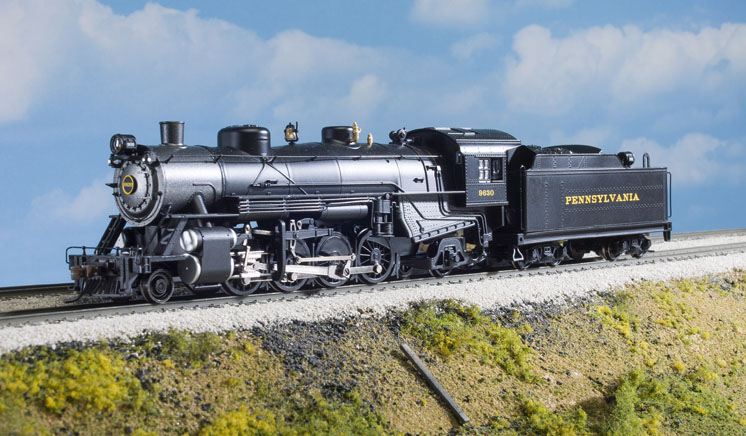

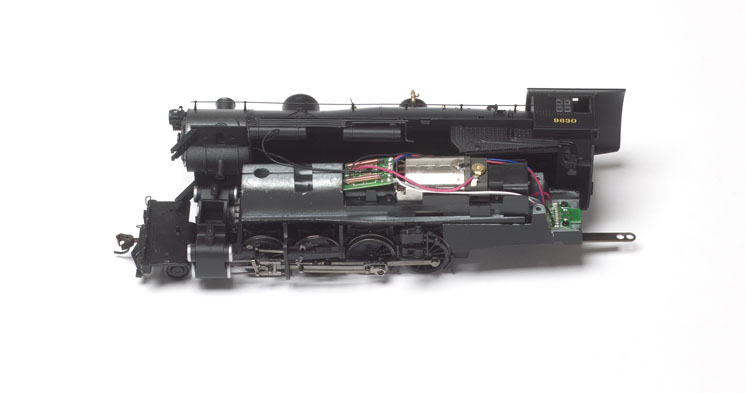
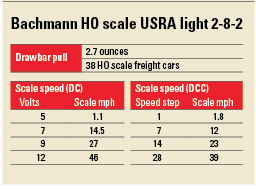

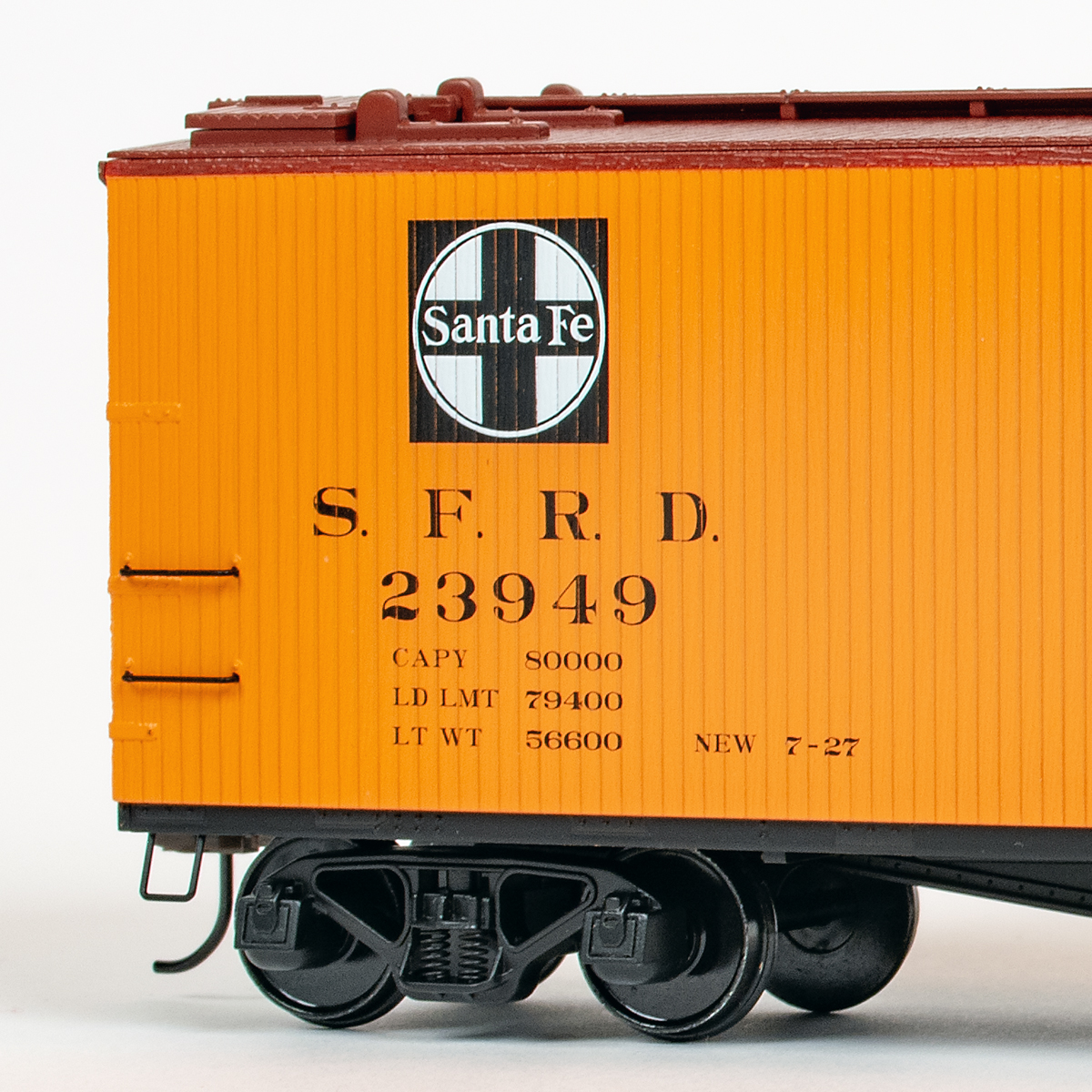
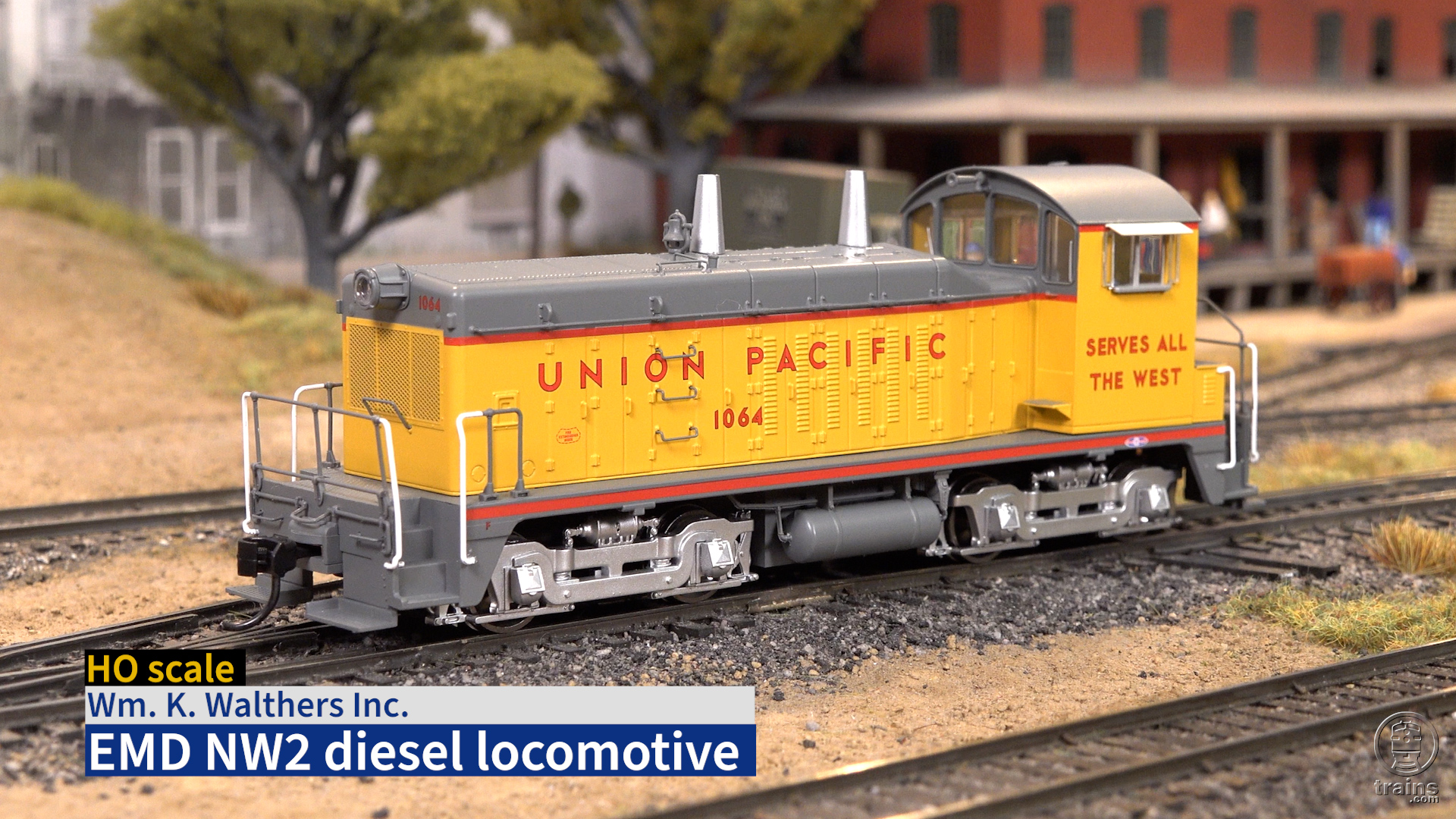
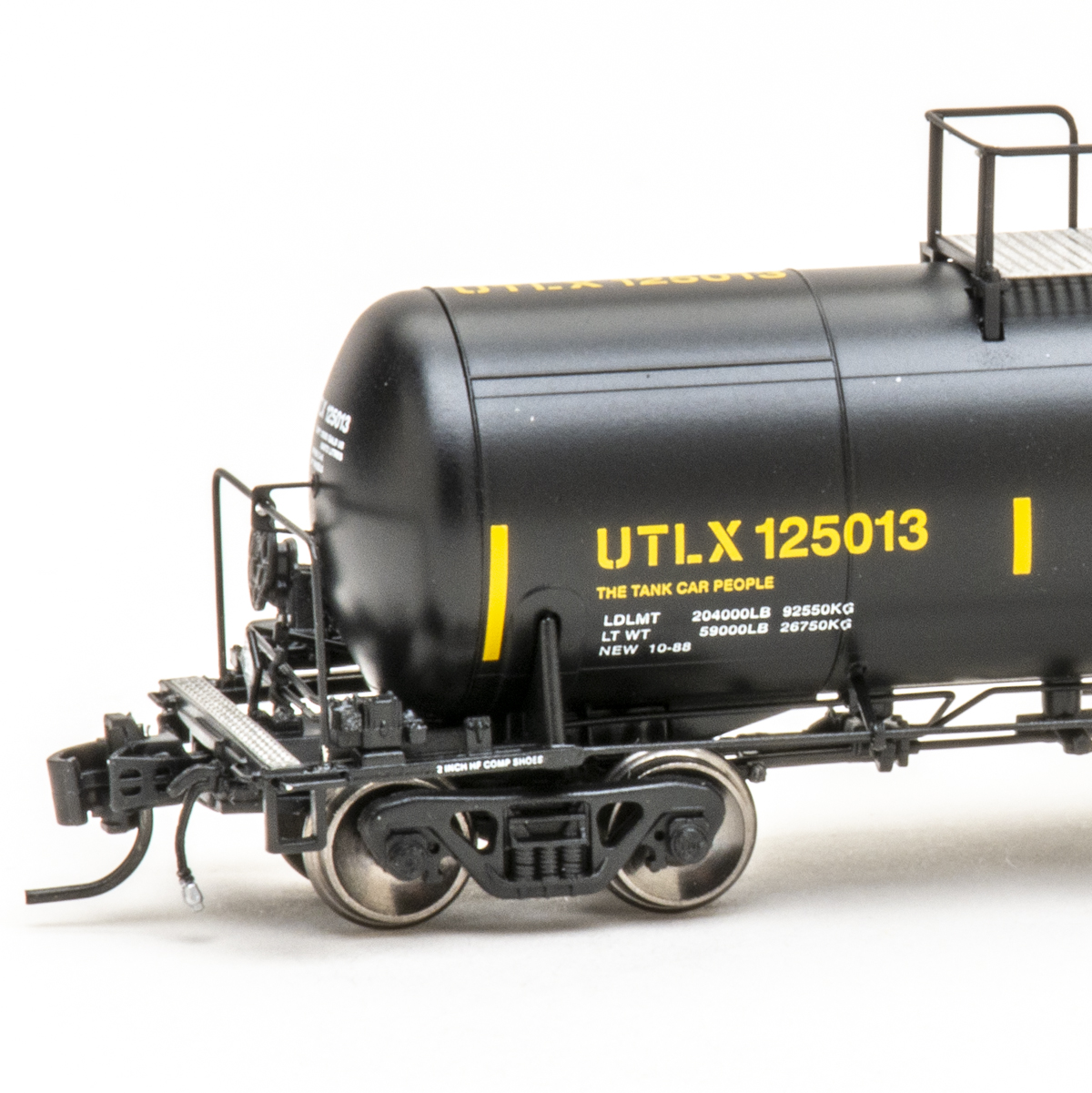
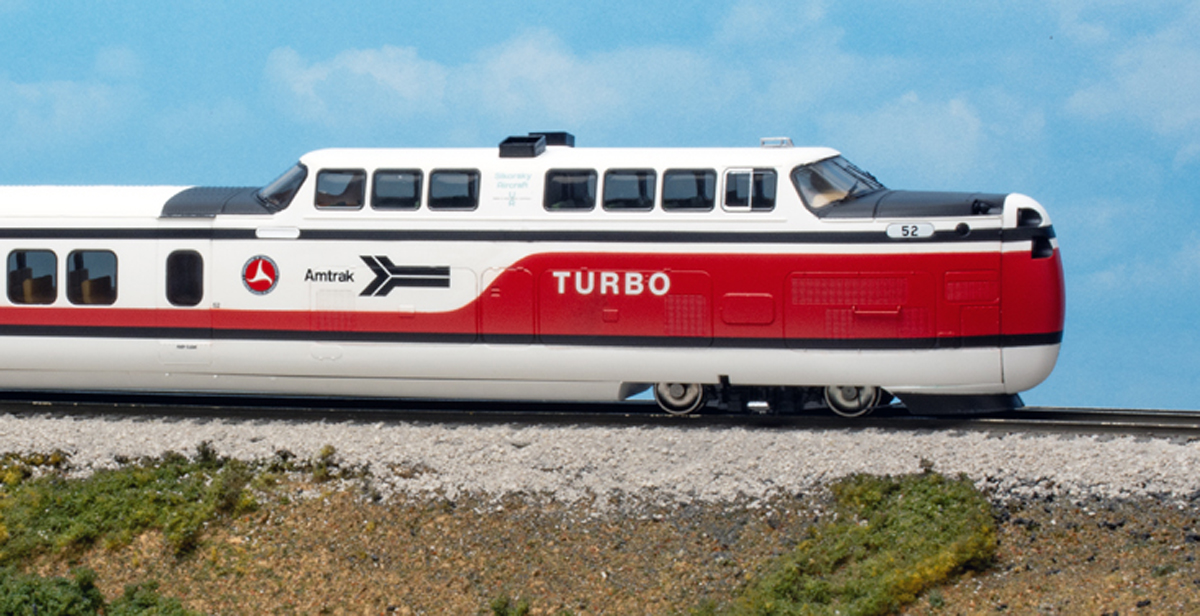




Thanks for reviewing this model. Are there different tender styles based on roadname?
I have the Bachman 0-6-0 Steam engine with Sound Value decoder and like it, and have experienced no problems, and did not even realize it had a belt drive, but for $400 I wish the 2-8-2 had more weight, and included a coupler clank sound. One way around that might be to get the DCC Ready version and add the Econami sound decoder, but that would probably cost more? The 2-8-2 looks great, and I hope it might be available in CN road name.?
In the past I have had trouble with Bachmann's belt drive systems. This is a very good looking engine and would like to have one. Do you think their belt system is any better now than 3 or 4 years ago?
Are you sure that the sand dome is the correct height?
Thanks!
Charles